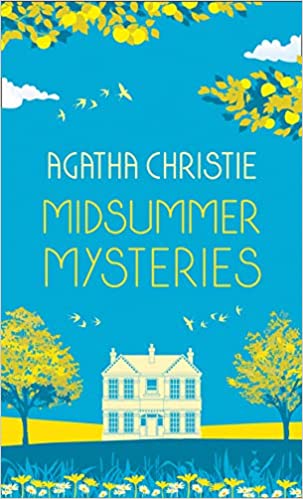Publication History
Agatha Christie’s “The Double Clue” is a gem in the Hercule Poirot story collection. It is known for its clever plot and introduction of a significant character in Poirot’s life. Here’s a look at its rich publication history and adaptations:
The story debuted in the December 1923 issue of The Sketch, a popular magazine in the United Kingdom. The Sketch was known for featuring serialized works of fiction, making it an ideal platform for Christie’s short stories.
Following its initial publication, “The Double Clue” found a home in Christie’s first collection of short stories featuring Hercule Poirot, titled Poirot Investigates. Published by Bodley Head in March 1924, this collection cemented Poirot’s status as a beloved detective.
While Poirot Investigates was available in the United States, “The Double Clue” was later included in another American collection, The Under Dog and Other Stories. This collection was published by Dodd, Mead, and Company in 1951 and brought some of Christie’s lesser-known short stories to a new audience.
The story’s enduring popularity led to its adaptation for the small screen. It was featured in the acclaimed series Agatha Christie’s Poirot, starring David Suchet as the meticulous Belgian detective. This adaptation aired on ITV in 1991, capturing the essence of Christie’s narrative and introducing it to a new generation of fans.
Over the years, “The Double Clue” has also been adapted for radio and stage, demonstrating its versatility and the timeless appeal of Christie’s storytelling.

Plot Synopsis
Marcus Hardman, a collector of various antique precious objects, calls in Hercule Poirot to investigate a jewel theft that occurred during a small tea party at his house. Hardman showed his guests his collection of medieval jewels and later discovered that his safe had been rifled and the objects had been taken.
Four guests had the opportunity to commit the theft: Mr. Johnston, a South African millionaire newly arrived in London; Countess Vera Rossakoff, a refugee from the Russian Revolution; Bernard Parker, a young and effeminate agent for Hardman; and Lady Runcorn, a middle-aged society lady whose aunt is a kleptomaniac. The actions and reactions of these guests become crucial in Poirot’s investigation.
Upon examining the scene, Poirot’s keen eye for detail uncovers a man’s glove holding the safe open and a cigarette case with the initials “BP.” Parker denies owning either item, but Poirot’s sharp observation matches the glove to one carelessly thrown down in Parker’s home. The next day, Countess Rossakoff, indignant at being suspected, visits Poirot, adding a layer of intrigue to the case.
Poirot later visits Hardman and reveals the thief. He explains to Hastings that the double clue of the glove and the case aroused his suspicion. Only one clue was genuine, and the other was a red herring. The thief returns the jewels and departs from London, with Poirot keeping the theft from the police, leaving everyone surprised by this unexpected turn of events.
The Review
s always, Poirot’s character is a delight. His meticulous attention to detail and keen understanding of human nature allow him to solve the case with his usual flair. Christie’s portrayal of Poirot’s methods – his “little grey cells” – is as engaging as ever.
The introduction of Countess Rossakoff is one of the highlights of this story. She is a rare recurring character in Poirot’s world, and her chemistry with the detective adds a layer of complexity to the narrative. The Countess is portrayed with a mix of elegance and mystery, making her an unforgettable character.
While less central to the narrative, Mr. Hardman’s character provides a glimpse into the high society of the time. His desperation and arrogance are well-captured, making him a perfect foil for Poirot’s calm and methodical demeanor.
Christie’s writing in “The Double Clue” is sharp and concise, which is characteristic of her short stories. The plot unfolds smoothly, meticulously placing each clue to guide the reader towards the solution. Themes of deception, social status, and the contrast between appearance and reality are woven seamlessly into the narrative.
The story also highlights Poirot’s ability to look beyond the obvious. While other characters might overlook the significance of the clues, Poirot’s keen observational skills and understanding of human psychology lead him to the truth.
“The Double Clue” is a classic example of Agatha Christie’s mastery in crafting a compelling mystery within a short format. The story’s tight plot, engaging characters, and clever resolution make it a must-read for fans of the genre. The introduction of Countess Vera Rossakoff adds a unique charm, providing a glimpse into Poirot’s more personal side.
For longtime fans and new readers, “The Double Clue” offers intrigue, wit, and classic detective work. It’s a testament to why Agatha Christie remains one of the most beloved authors in the mystery genre. So, if you haven’t yet, dive into this short story and experience the brilliance of Hercule Poirot at his best.
Midsummer Mysteries Short Story Reviews
Story #1: The Blood-Stained Pavement

Agatha Christie, born Agatha Mary Clarissa Miller on September 15, 1890, in Torquay, Devon, England, is one of the most celebrated and prolific authors in the history of literature. Known as the “Queen of Crime,” Christie authored 66 detective novels, 14 short story collections, and the world’s longest-running play, The Mousetrap.
Christie’s early life was marked by a voracious love for reading and an imaginative mind. She was homeschooled by her mother and later attended finishing school in Paris. Her writing career began during World War I, where she served as a nurse. It was during this time that she wrote her first novel, The Mysterious Affair at Styles, which introduced the world to one of her most famous characters, the Belgian detective Hercule Poirot.
Christie’s works are renowned for their intricate plots, memorable characters, and surprising twists. Apart from Poirot, she created another iconic sleuth, Miss Marple, a shrewd and observant elderly spinster. Some of her most famous novels include Murder on the Orient Express, Death on the Nile, and And Then There Were None, the latter often cited as one of the best-selling books of all time.
In her personal life, Christie experienced both highs and lows. She married Archibald Christie in 1914, but the marriage ended in divorce in 1928 following his infidelity. The same year, she disappeared for 11 days, a mystery that remains unsolved and has sparked much speculation. In 1930, she married archaeologist Sir Max Mallowan, with whom she shared a deep passion for archaeology, often accompanying him on expeditions in the Middle East.
Christie’s literary achievements were recognized with numerous awards. In 1971, she was appointed Dame Commander of the Order of the British Empire (DBE) for her contributions to literature. Her works have been adapted into numerous films, television series, and stage productions, attesting to their enduring popularity.
Agatha Christie passed away on January 12, 1976, in Wallingford, Oxfordshire, England. Her legacy lives on through her timeless stories, beloved characters, and her unparalleled ability to captivate readers with the art of mystery.





Leave a comment